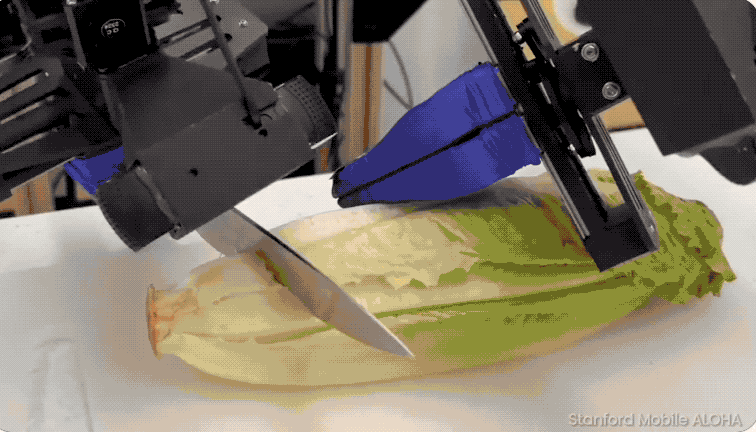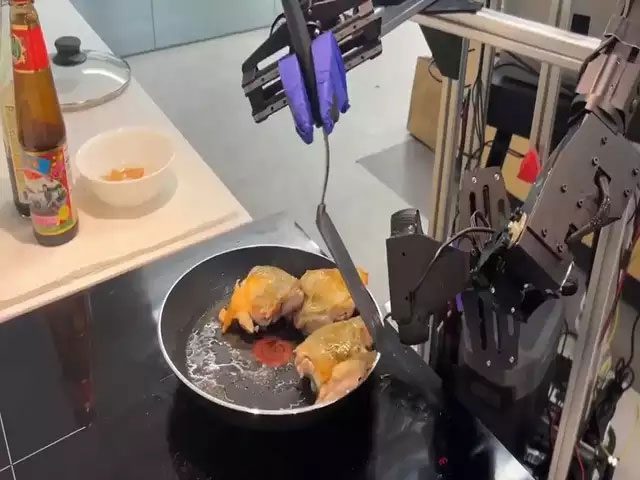This invention is so advanced that it can cook like a chef and perform numerous household tasks like a maid.
As the Lunar New Year approaches, many families find themselves anxious and in a frenzy due to their housekeepers taking early holidays, arriving late, or even refusing to return to work. The holiday season is also peak time for domestic help services. The high demand over the limited supply makes these “maids” particularly valuable during this time.
If the invention detailed below becomes widespread, it could help many families solve the issue of “maid shortages” during the upcoming Lunar New Year.
This special invention is called Mobile ALOHA, a robot developed by Stanford University. Recently, Stanford introduced Mobile ALOHA, a robot with specially designed arms aimed at mimicking human-like movements.

Robot Mobile ALOHA can cook many dishes like a human. (Photo: Stanford University)
Robot Mobile ALOHA is the result of two computer scientists, both Chinese researchers named Tony Zhao and Zipeng Fu, after three months of development.
Upon its launch, the Mobile ALOHA robot attracted significant attention from the tech community due to its ability to coordinate movements fluidly. Instead of interacting with objects based on pre-programmed coordinates, this robot can synchronize its movements through a mechanical system. This combination provides data for the artificial intelligence (AI) to learn and replicate actions with high precision.
According to experts Zipeng Fu and Tony Zhao, they developed the software with guidance from professors at Stanford University, after which they assembled the hardware themselves to cut costs. However, the cost of producing the Mobile ALOHA robot is still around $32,000.
Experts state that Mobile ALOHA is designed to assist humans in daily life. It can perform complex tasks, such as cooking and cleaning.
The robot can replicate 90% of human actions.

Robot Mobile ALOHA can cook and help clean the house quickly. (Photo: Stanford University).
The Mobile ALOHA consists of two highly flexible arms, along with a wheeled base for mobility. Notably, this robot is equipped with AI. Its AI model has been trained based on data from human actions. Thus, on average, with just about 50 demonstrations for each task, the Mobile ALOHA robot can replicate actions with a success rate of over 90%.

Robot Mobile ALOHA has many advantages over other robots due to its direct learning capabilities. (Photo: Stanford University).
Furthermore, the ability to learn directly gives Mobile ALOHA several advantages over robots that are programmed and adjusted manually. Stanford experts report that Mobile ALOHA can achieve speeds of 1.4 m/s, equivalent to a walking pace. Its arms can reach heights of 2 meters and extend 1 meter, making it well-suited for tasks in a home or office environment.
In addition to cooking and assisting with household chores, in the future, scientists hope to improve Mobile ALOHA to handle more complex tasks, such as completely replacing a housekeeper, while also applying this robot’s technology to various other fields in daily life.


















































